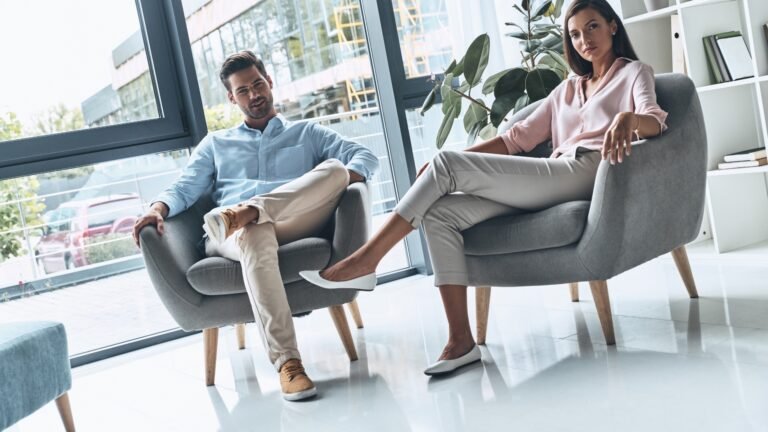
Modern vs. Classic Sofas: Finding The Right Look For Your Home
A sofa isn’t just another piece of furniture; it’s the heart of the living room. It’s where family gathers, where friends settle in for long conversations, and where you unwind after a long day. Choosing the right sofa goes beyond picking a design you like—it’s about finding one that fits your lifestyle, complements your space, and lasts for years. And when it comes to this choice, the debate often narrows down to modern vs classic sofas. In this blog, we will explore the differences, the strengths, and the trade-offs between these two timeless styles so you can decide on the best sofa for home interiors.
What Defines a Modern Sofa?
When people think of modern sofas, they imagine sleek, uncluttered designs that feel at home in today’s interiors. As part of the modern vs classic sofas conversation, modern sofas stand out for their clean lines and minimalist shapes. They often come in neutral shades like grey, beige, or black, though bold accent colors are also popular in urban homes.
Another key feature is functionality. Many modern sofas come in sectional or modular styles, allowing you to rearrange the pieces as needed. Some include built-in recliners, hidden storage, or even convertible designs that double as guest beds—ideal for apartments or compact living spaces.
Modern sofas are about efficiency and adaptability. They look light, often with raised legs or slim frames, making a room feel more open. Perfect for city dwellers or anyone who loves a crisp, contemporary aesthetic, these sofas balance practicality with style while never overwhelming a space.
The Appeal of Classic Sofas
On the other side of the spectrum, classic sofas embody tradition, craftsmanship, and a sense of permanence. Unlike their modern counterparts, they often feature ornate details such as rolled arms, tufted backs, or carved wooden legs. Upholstery plays a big role too—plush fabrics, rich leathers, and deep colors give them a warm, inviting presence.
This style resonates strongly with homeowners who lean toward modern vs traditional furniture debates. Classic sofas bring character to a room, acting not just as seating but as statement pieces that anchor the décor. They have a sense of grandeur, whether it’s a Chesterfield with its deep buttoning or a Victorian-inspired design with intricate woodwork.
Classic sofas also work best in homes with larger living rooms or interiors that emphasize timeless appeal over changing trends. Their durability and craftsmanship often mean they last for decades, aging gracefully and sometimes even becoming heirloom pieces.
Side-by-Side Comparison: Modern vs. Classic Sofas
Now that we’ve looked at both individually, let’s weigh them side by side. The modern vs classic sofas debate really comes down to priorities: do you want sleek practicality or timeless artistry?
- Design & Aesthetics: Modern sofas are minimalist, prioritizing clean lines and open space. Classic sofas, in contrast, lean toward detail, ornamentation, and richness.
- Comfort: Modern designs often use firmer cushions and streamlined padding, offering functional comfort. Classic sofas usually provide deeper, more plush seating, designed for lounging.
- Durability & Materials: Modern sofas frequently combine lightweight materials like steel, engineered wood, and fabric blends. Classic sofas rely on solid wood frames, thick upholstery, and traditional craftsmanship.
- Space Compatibility: Modern sofas are perfect for apartments, lofts, and open-plan spaces. Classic sofas work best in larger homes, heritage interiors, or rooms that can accommodate their presence.
In essence, the modern vs classic sofas decision hinges on the environment you’re furnishing and the atmosphere you want to create. If you’re aiming for chic and adaptable, modern works best. If you want a sofa that commands attention and feels rooted in tradition, classic is the way to go.
Which Sofa Style Matches Your Lifestyle?
At the end of the day, it’s not just about design—it’s about how your sofa fits into your daily life.
- A young professional living in a compact apartment might value the flexibility of a modular modern sofa, which can be rearranged for guests or converted into a sleeper when needed.
- A family in a suburban home, however, might prefer a classic sofa, with its sturdier build and ability to withstand years of movie nights, kids, and guests.
- If you entertain often, modern sofas offer more variety in shapes and arrangements for gatherings. If your space is more formal, a classic sofa instantly sets the tone with its presence.
Maintenance also plays a role: modern sofas, with simpler fabrics, are often easier to clean. Classic sofas, though more durable, sometimes require special care for wood or leather finishes.
Ultimately, the best sofa for home interiors is the one that balances your lifestyle with your aesthetic preferences.
Blending Modern and Classic Styles
What if you don’t want to choose? The good news is that interiors today are more flexible than ever. Mixing styles can create harmony and depth.
For example, you might pair a sleek modern sofa with a vintage coffee table, or update a classic sofa with new fabric in contemporary tones. This blending works particularly well for homeowners who enjoy experimenting and don’t want their space locked into one era. In fact, thoughtfully mixing modern vs traditional furniture often produces the most interesting, personalized interiors—where old-world charm meets modern convenience.
Conclusion
Both modern and classic sofas bring something unique to the table. Modern designs offer lightness, adaptability, and practicality, while classic sofas provide richness, depth, and a sense of permanence. Choosing between modern vs classic sofas comes down to your lifestyle, space, and the atmosphere you want to create. The right sofa won’t just be a seat—it will be the centerpiece of your living room, reflecting both your taste and the way you live. Comfort, character, and style should all play a role in your decision, ensuring your sofa feels as good as it looks.



